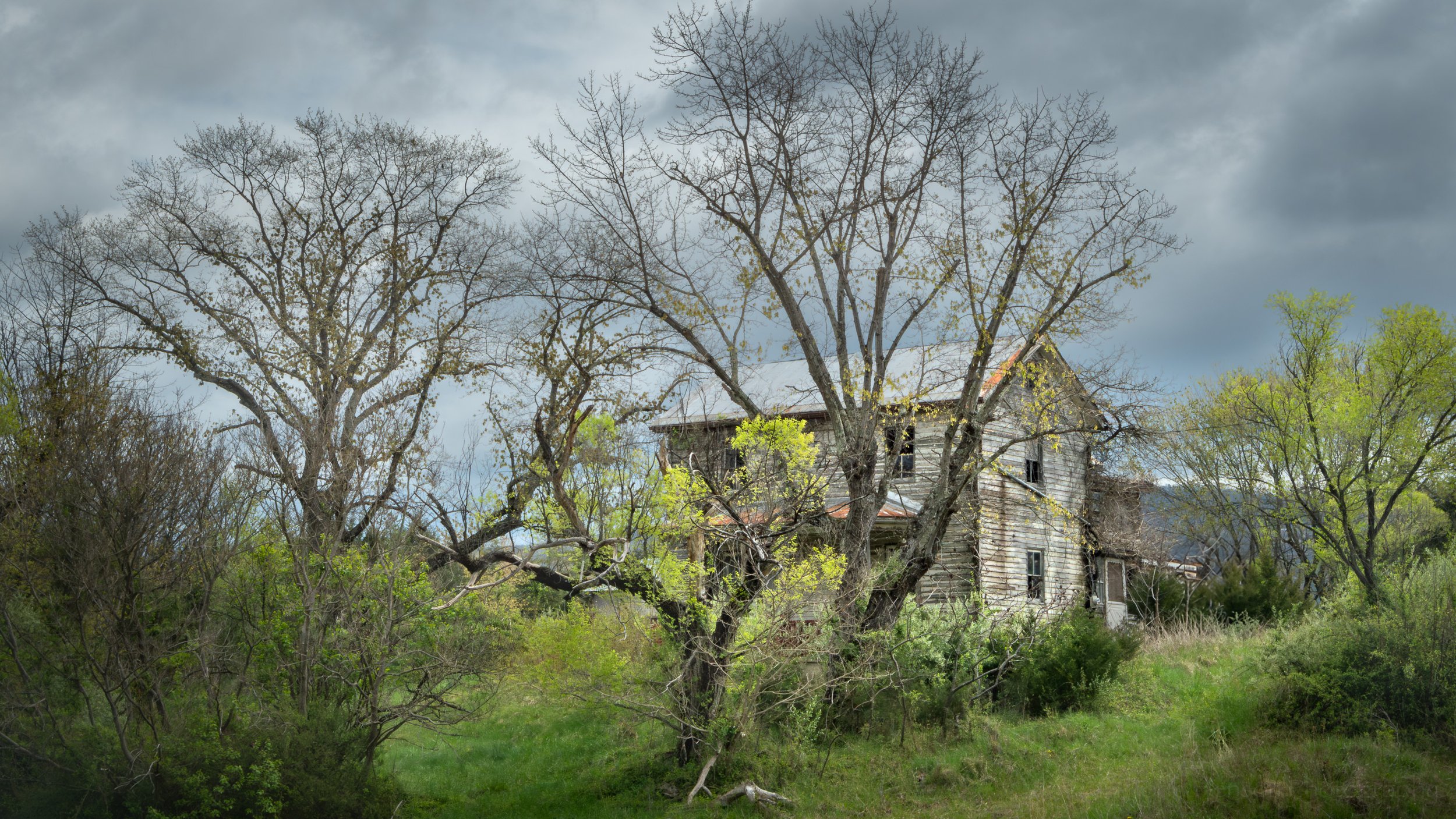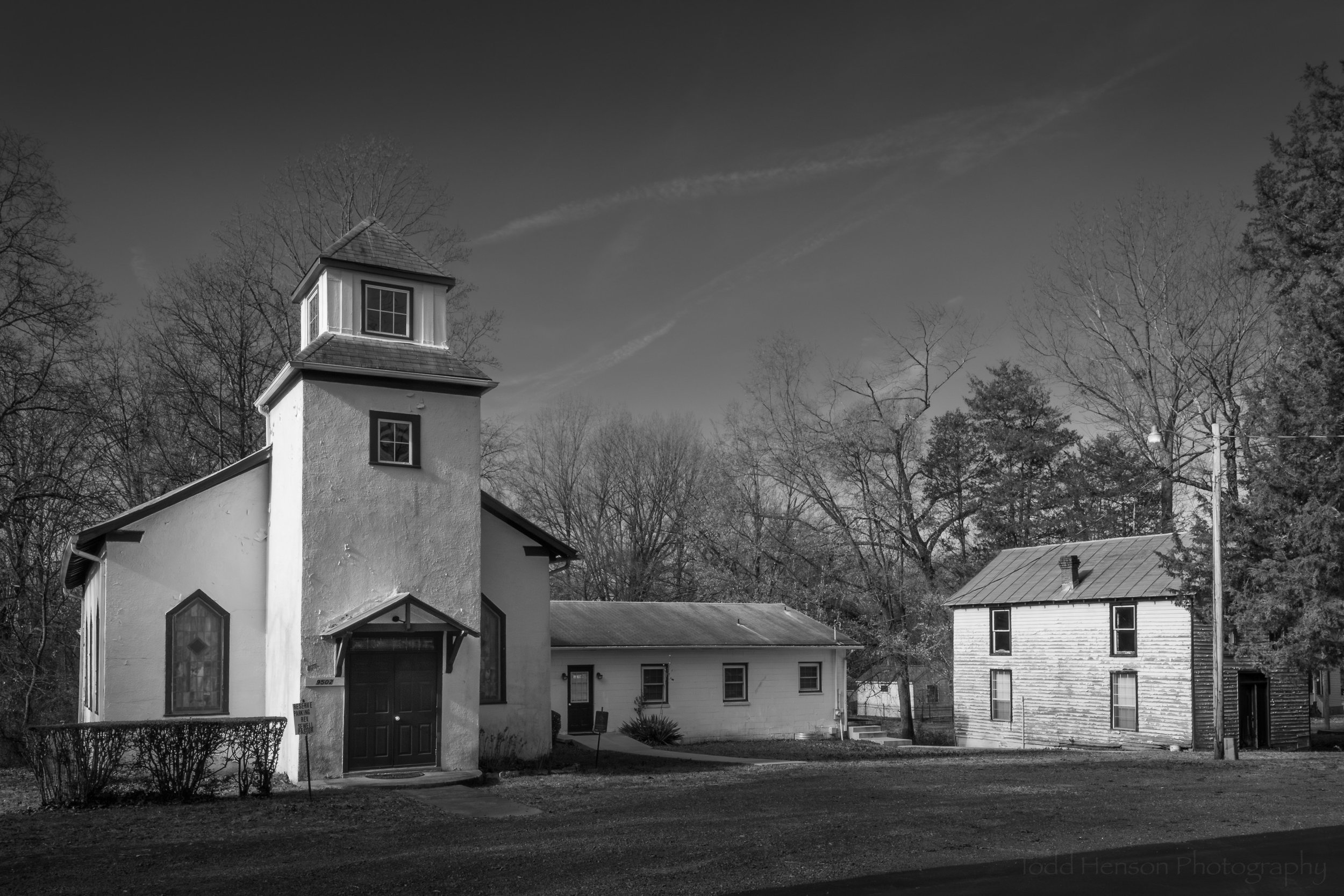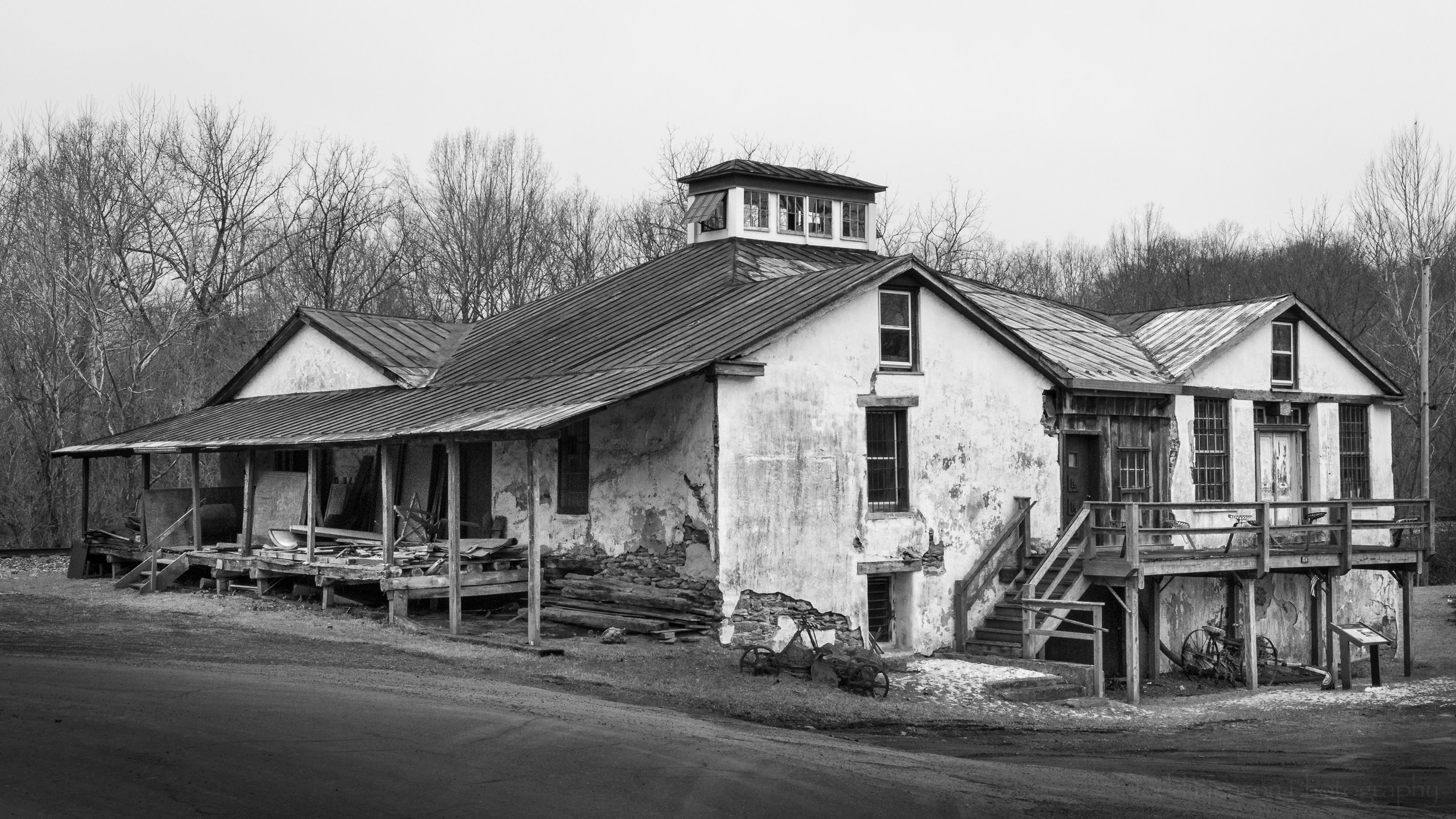In mid-March my father and I found ourselves taking a back road conveniently enough named Back Road. I saw a church highlighted by the sun atop a rolling hill and took a left onto Fairview Road to get a better view. I hadn’t expected to find a second church just beyond the one we’d seen, and was quickly drawn to it as it was an older abandoned building. The second church is named Fairview Church of God, matching the name of the road, and it’s a wooden church with the white paint peeling off and the mostly green metal roof, matching the green shutters, showing many areas of rust.
I wasn’t able to find much information about the church, but it appears it may have been built around 1940. I don’t know when or why it was abandoned. As mentioned, there’s a second church very near by, Mt. Zion Lutheran Church, that’s in very good repair and obviously still in use.
Do you enjoy these posts?
Sign up to receive periodic emails with updates and thoughts. Don’t worry, I won’t spam you. And please consider purchasing artwork or products from my online store, and using my affiliate links in the sidebar to the right when shopping online.
I appreciate your support!












